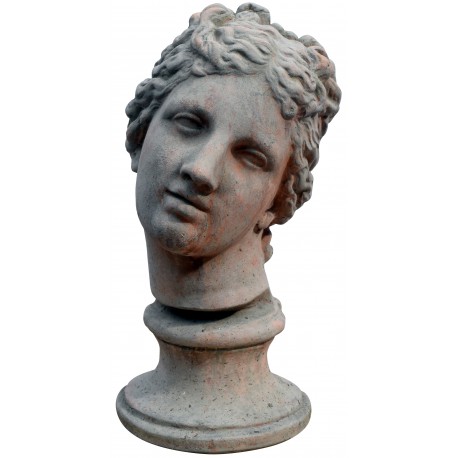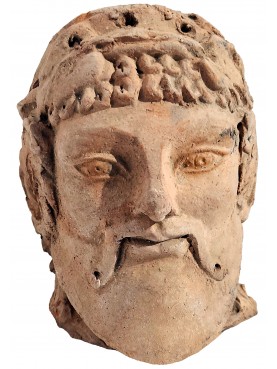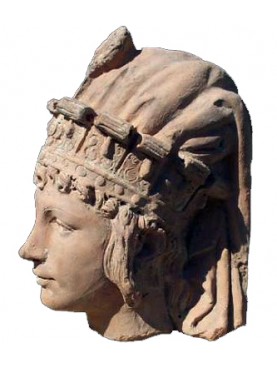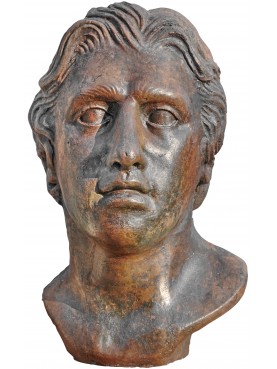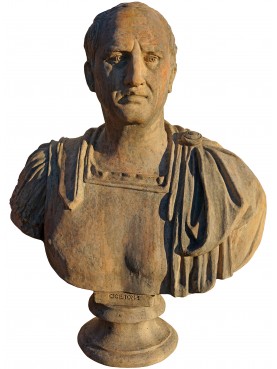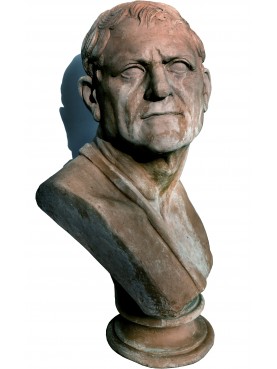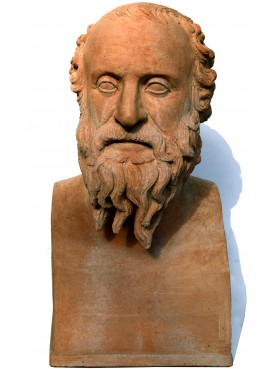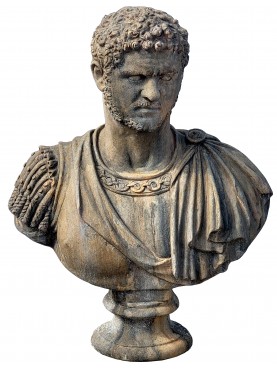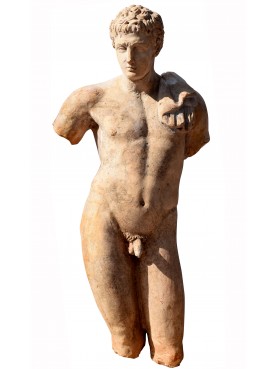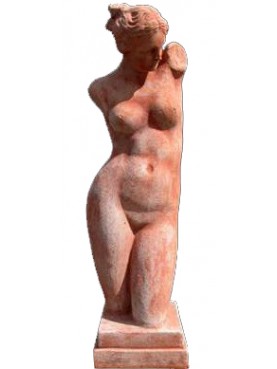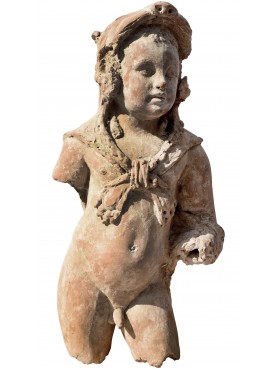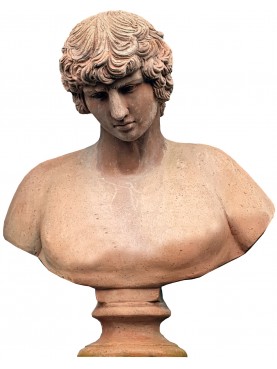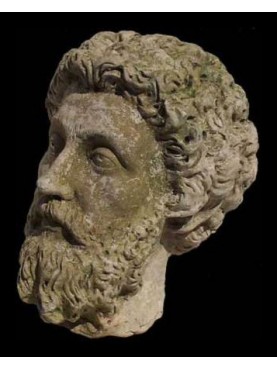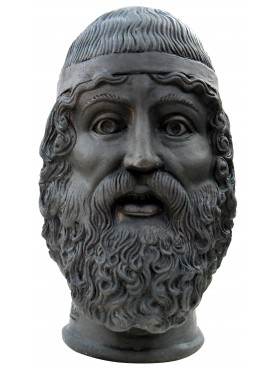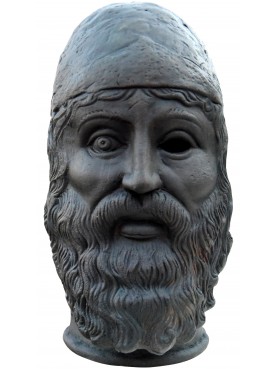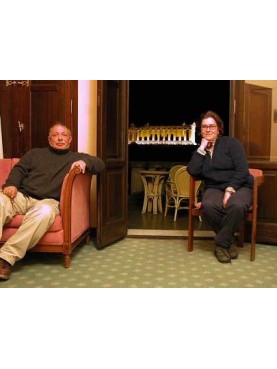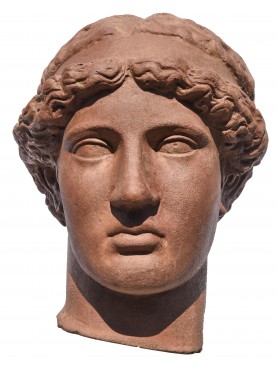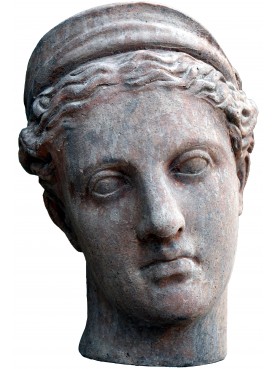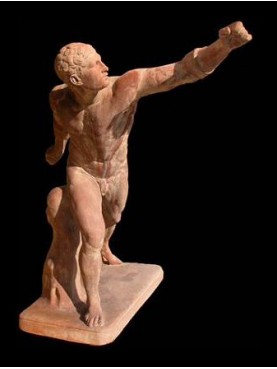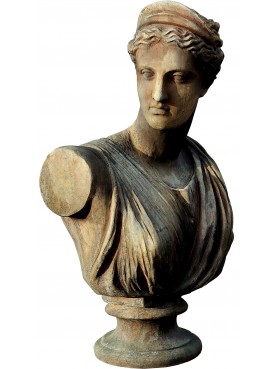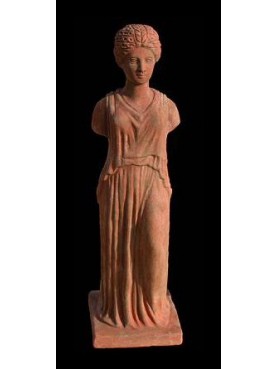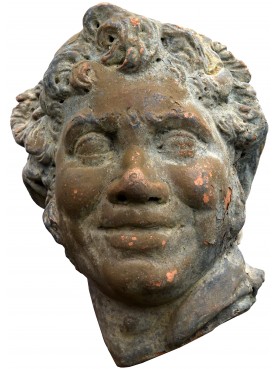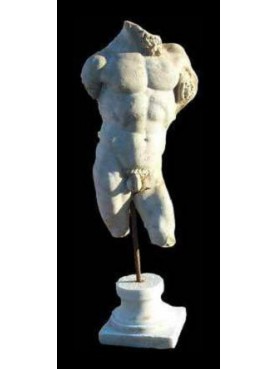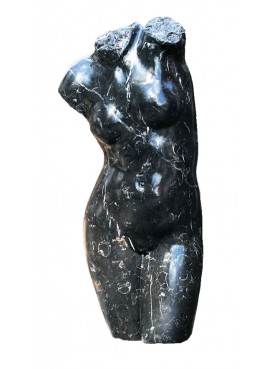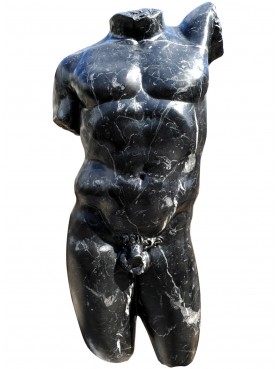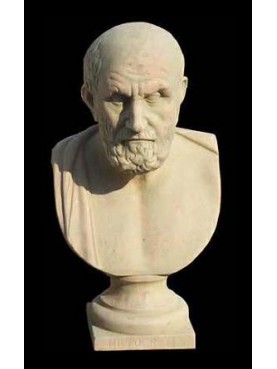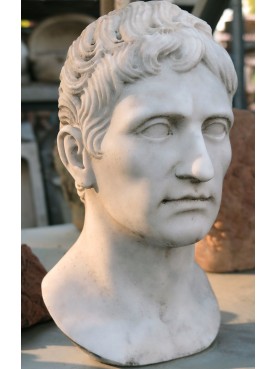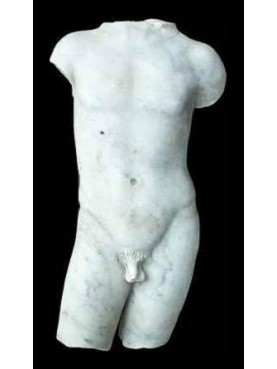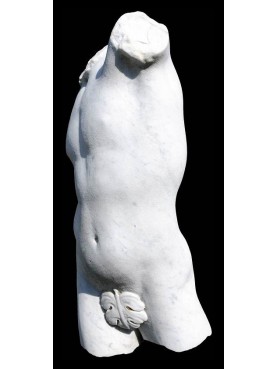Terracotta head of the Venus de' Medici or Medici Venus
Terracotta head of the Venus de' Medici or Medici Venus
New
This product is no longer in stock
Data sheet
| Height | 13.78 in | 35 cm |
| Width | 7.09 in | 18 cm |
| Weight | 11.02 lbs | 5 Kg |
| Artist / Creator / Architect | CLEOMENES SON OF APOLLODORUS OF ATHENS | |
| Round base diameter Ø | 6.69 in | 17 cm |
| Historical period | end of the first century BC | |
| Manufacturing | Recuperando srl | |
| Material | Terracotta Impruneta (Florence) |
More info
The Venus de' Medici or Medici Venus is a Hellenistic marble sculpture depicting the Greek goddess of love Aphrodite. It is a 1st-century BCE marble copy, perhaps made in Athens, of a bronze original Greek sculpture, following the type of the Aphrodite of Knidos, which would have been made by a sculptor in the immediate Praxitelean tradition, perhaps at the end of the century. It has become one of the navigation points by which the progress of the Western classical tradition is traced, the references to it outline the changes of taste and the process of classical scholarship. It is housed in the Uffizi Gallery, Florence, Italy. The goddess is depicted in a fugitive, momentary pose, as if surprised in the act of emerging from the sea, to which the dolphin at her feet alludes. The dolphin would not have been a necessary support for the bronze original.
It bears a Greek inscription CLEOMENES SON OF APOLLODORUS OF ATHENS on its base. The inscription is not original, but in the 18th century the name "Cleomenes" was forged on sculptures of modest quality to enhance their value, while the inscription on the Venus de' Medici was doubted in order to ascribe the work to one of various highly-thought-of names: besides Praxiteles the less-likely names of Phidias or Scopas. The restorations of the arms was made by Ercole Ferrata, who gave them long tapering Mannerist fingers that did not begin to be recognized as out of keeping with the sculpture until the 19th century.
The Venus de' Medici is the name piece under which are recognized many replicas and fragments of this particular version of Praxiteles' theme, which introduced the life size nude representation of Aphrodite. Though this particular variant is not identifiable in any extant literature, it must have been widely known to Greek and Roman connoisseurs. Among replicas and fragments of less importance, the closest in character and finest in quality is a marble Aphrodite at the Metropolitan Museum of Art, described below.
Such sculptures are described as "Roman copies", with the understanding that these were produced, often by Greek sculptors, anywhere under Roman hegemony "say, between the dictatorship of Sulla and the removal of the Capital to Constantinople, 81 BCE to CE 330" Their quality may vary from work produced by a fine sculptor for a discerning patron, to commonplace copies mass-produced for gardens.
The origin of the Venus is undocumented: "its reputation seems to have grown up gradually," Francis Haskell and Nicholas Penny remarked. It was published in the collection at the Villa Medici, Rome, in 1638, given three plates in the anthology of the most noble sculptures that the ravages of time had spared in Rome compiled by François Perrier, Segmenta nobilia signorum et statuarum que temporis dentem invidium evase, Rome 1638. The Venus was already known by 1559, it now appears, for a bronze reduction of it was among the series of the most famous Roman sculptures that were featured on a cabinet completed in that year; it was commissioned by Nicolò Orsini, conte di Pitigliano, as a gift to Philip II of Spain: the sculptures were by the Dutch sculptor trained in Benvenuto Cellini's atelier, Willem van Tetrode, called Guglielmo Fiammingo in Italy.
Detail of John Zoffany's 1772 painting The Tribuna of the Uffizi (now in the Royal Collection), showing the Venus (right) on show in the Tribuna, surrounded by English and Italian connoisseurs.
Though visitors to Rome like John Evelyn found it "a miracle of art", it was sent to Florence in August 1677, its export permitted by Innocent XI because, it was thought, it stimulated lewd behavior. In the Tribuna of the Uffizi it was a high point of the Grand Tour and was universally esteemed as one of the half-dozen finest antique statues to have survived, until a reaction in taste began to set in during the 19th century, in the form of a few dissenting voices (Haskell and Penny p. 325). Luca Giordano made hundreds of drawings of it, Samuel Rogers made daily appointments with it, Zoffany included it in his 1778 Tribuna of the Uffizi, and Lord Byron devoted five stanzas of Childe Harold to describing it. It was one of the precious works of art shipped to Palermo in 1800 to escape the French, to no avail: such diplomatic pressure was brought to bear that the Vénus de Medicis was shipped to Paris in 1803. After Napoleon's fall it arrived back in Florence on 27 December 1815.
Source Wikipedia

